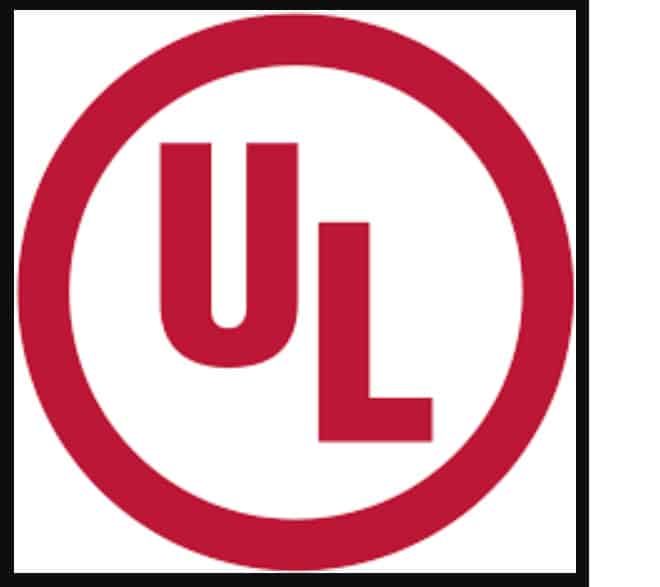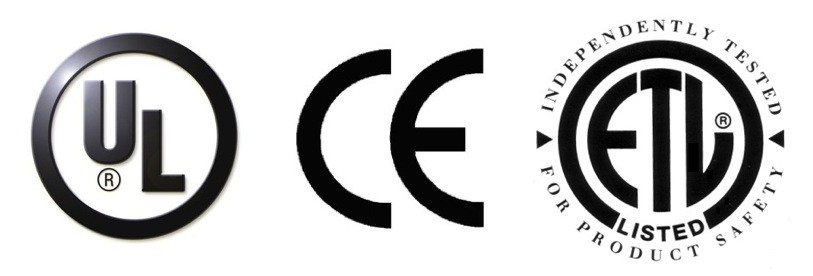UL Kiosk Standards
Summary — Unless UL is specifically requested by the customer, kiosk companies and others will simply follow their own best practices. Being formally certified can be an additional $10K + time. In many situations customers writing RFPs will specifically call out UL certification. An example is outdoor requirements for outdoor smart city terminals. LinkNYC or IKE terminals likely have the UL outdoor certification if only for liability considerations.
Introduction
Meeting UL regulation and having your product officially UL Listed requires budget and it requires time. It is an investment which increases your products viability in the marketplace as well as serving to mitigate liabilities.
Deployments in Europe require CE as the equivalent. In more regulated countries such as Canada you may find that UL is more a requirement than an option as it is here in the U.S.
Most often in the U.S. a manufacturer will say that everything they build is built to meet or exceed UL standards in the electrical sense. What this means is that, as a rule, the components all wear the UL tag. And that actual certification would be facilitated by that. And for reference the parallel carries over into PCI PA-DSS when a manufacturer uses “certified” components but has no evidence of being examined by QSAs. It is complicated.
| Example UL Tilt Test by Olea
When we design a new kiosk, we put it through a UL Stability Test. This consists of 2 tests. 1. A Force Test (trying to push the kiosk over using a calculated percentage of its total weight) and 2. A Tilt Test, which is shown below. (Kiosk placed on a 10% incline and must be fully stable). The purpose of this testing is to create a consistent safety standard that our customers can expect from their Olea Kiosks, Inc. Kiosk. In this case, we needed a smaller base for an existing design for use at a storefront inside of Walmart stores. We ended up making it happen, and have been rolling out since! Contact Olea for more information. |
There are companies that advertise UL certification yet have no recorded UL certifications. Buyer beware.
Federal agencies often request UL certification. In the 2021 request for bid by the Social Security Administration. From the q&a:
- Based on our research, we believe UL 2361 (Outline for Investigation for Custom Built Kiosks) is the more appropriate standard for the type of kiosk the SSA is looking for.
Response: Our market research indicated that UL 962 is the most appropriate certification. Offerors are free to respond with alternative UL certification, and should explain the differences and advantages in their offering over UL 962.
UL certification for custom kiosks means the stability of the units. These tests are known as the slide test, force stability test and 10 degree status tip static tip stability test. The tests are baselined against the normal 5 year old child. The usual precaution is if the unit is subject to a push force of 9Kg in any direction, then bolt it down. See iCORE_Installation_Manual_english from Wincor Nixdorf.
The force & tip are practical circumstances much like UL-291 which estimates how long it would take a large person with a crowbar to force open a currency acceptor. UL-291 comes up in regards to the Safe being using along with the type of location and inherent security (or lack of).
Additional UL standards specific to exhibitions and displays should be considered. Also with new telehealth structures there are more UL standards which come into play. Kiosks, displays, fixtures, POP, infrastructure, furniture (check-in at hotel).
Excerpt from UL 2361
1.1 These requirements cover self-contained, custom-built kiosks that provide information, ticket machines, electronic point-of-sale products, customer self-checkout stands, and business application products to be employed in accordance with the National Electrical Code, NFPA 70. Kiosks as covered by these requirements are intended for indoor use only, except that they will be investigated for outdoor use or use in a protective location when so designated by the manufacturer.
1.2 These requirements cover kiosks intended for general use, operating from a voltage of 240 volts or less. This equipment is intended for installation in locations in accordance with the National Electrical Code, ANSI/NFPA 70, where the ambient temperature does not exceed 25°C (77°F) maximum unless specified by the manufacturer.
1.3 This Outline of Investigation does not directly apply, however is capable of being used as a supplement to the Standard for Coin and Currency Changers and Actuators, UL 756, when kiosks are intended for use with coin, credit card, debit card, currency, and token-operated devices.
Reference: https://www.shopulstandards.com
UL 60950 for Outdoor Requirements Come into Play
- Typical RFP statement — Kiosk shall be UL 60950-22 certified – Contractor shall provide a unique UL identifier number as this will allow the City to verify the compliance.
- UL-60950-22-TOC
- Equipment covered
- Ambient Air
- Mains
- Earth Potential
- Voltage limits
- Limited current circuits
- socket outlet
- UV radiation
- Corrosion resistance
- Fire
- Gaskets
- Moisture
- Plants and Vermin
- Dust
- Impact Text
- Explosive risks
- ventilation
Useful Links
-
- Search for UL certifications by manufacturer
- New to UL? https://www.shopulstandards.com/
- RoHS [rohsguide for now]
- FCC
- International TUV, CE, CUL and NOM
- CartStability PDF
- UL-291-faq
- UL-291 https://www.shopulstandards.com/ProductDetail.aspx?UniqueKey=23913 for “ATMs”
- https://www.shopulstandards.com/ for display units, expositions
- UL-962 for motor-operated furniture https://www.shopulstandards.com/
- UL-687 for safes (includes TL15 and TL30) https://www.shopulstandards.com/
UL RATINGS
UL stands for Underwriters Laboratories, an independent organization dedicated to educating businesses and the public about safety and performance of products in a wide spectrum of industries. UL has been testing and rating products for more than 100 years, and evaluates nearly 20,000 products annually. The UL rating is an indicator of product quality and certification of safety.
UL Ratings and Burglary Ratings for Safes, ATMs and Cash
Historically kiosk manufacturers have adhered to the same specifications the ATM manufacturers adher to, when necessary. That is the UL-291 spec and basically it is 15 minutes and a crowbar. Most times bandits wrap a chain around it and haul it away for disassembly. A good reference and explanation is here.
TL Rating — Most
TL rated safes are combination lock safes that offer protection against combinations of mechanical, electrical, and cutting tools. Safes with a TL rating will resist abuse for a varying amount of time, depending on which classification tier they fall under, from picking tools to hand tools, mechanical or electrical tools, grinding points, carbide drills, pressure-applying devices, cutting wheels, power saws and impact tools. Some levels of TR-rated safes can also withstand welding and cutting torch abuse at certain levels.
B-Rating — Least
A B-rated safe’s walls are less than 1/2″ thick, and its doors are less than 1″ inch thick. A B-rated safe earns its rating with the presence of a locking device. Typically, lock work and re-locks are examined when choosing a B-rated safe.
C-Rating — Greater
C Rate safes have steel walls that are at least 1/2” thick and doors that are at least 1” thick, as well as a lock.
Fire Rating
Fire ratings are evaluated by testing to see if safes withstand varying furnace heat for specific amounts of time. For example, the UL Class 350 1-hour fire rating means that the internal temperature of the safe will not exceed 350°F for at least 1 hour when exposed to external temperatures over 1700°F. A safe may have a 1-, 2-, or 3-hour time classification. Additionally, safes will be heated and then dropped from heights reaching 30 feet to test against explosions.
Thank you to our Contributors

